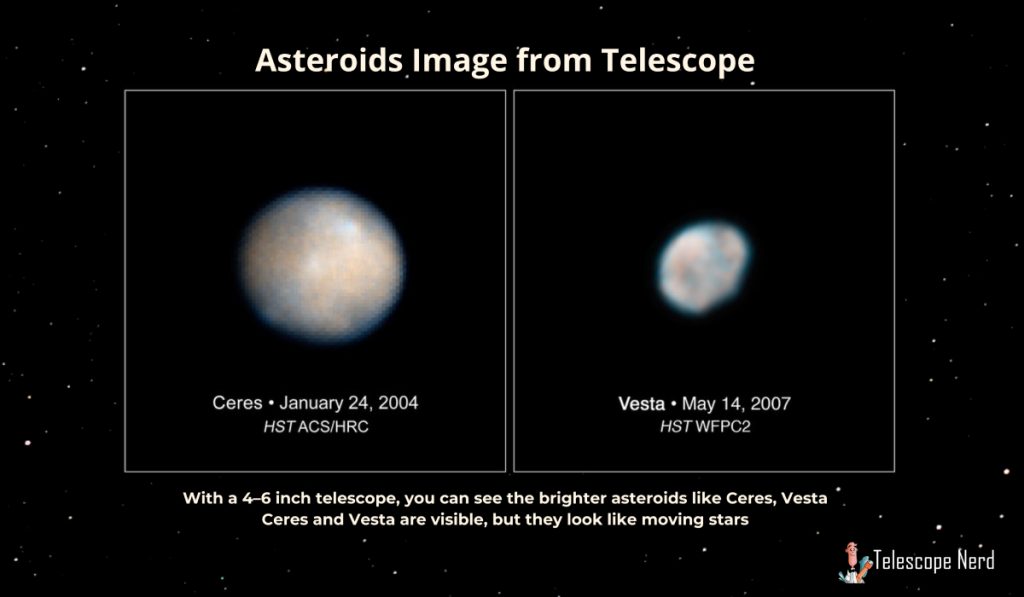Can you see asteroids with a telescope?
A telescope with an aperture of at least eight inches is used to observe asteroids, while observatories study the reflected light these bodies scatter. Hubble Space Telescope and NASA’s James Webb Space Telescope (JWST) supply views of these asteroids. The first space telescope, Near-Earth Object Surveyor, uses infrared to track thermal signals and gauge size precisely. Amateur telescopes are used to observe 2024 YR4, although this near-Earth object is difficult to observe without advanced equipment.

Can you see asteroids with a telescope?
Yes, you can see asteroids with a telescope. To the eye, an asteroid is only a point of light, yet that pinpoint drifts perceptibly among the stars over the span of an evening. With an 8-inch scope, a patient observer can usually detect the motion within two hours. Using a finder or a low-power eyepiece, simply centre the field and watch the sky slide.
Larger instruments reveal more details. Observatories look at light reflected off asteroids to judge their size, while a telescope with infrared like JWST can help track thermal signals of asteroids, giving both dimension and albedo in a single measurement. Such data is the source of programmes like the Catalina Sky Survey, whose network of telescopes finds and tracks near-Earth objects, and of specialists like Gregory Leonard, who uses the same network to refine orbits of newly spotted rocks. A new method able to spot 10-metre asteroids within the main belt further sharpens the tally, proving that even city-block-sized bodies are now within reach. For the backyard observer, it is important to aim, wait, and you will see the asteroid move. For science, the same sight, caught with bigger glass and warmer detectors, turns a gliding spark into a measured world.

Can you see asteroids without a telescope?
You can see asteroids without a telescope. You can manage to spot one in the night sky, yet asteroids do not share the features of comets. When it passes by, the asteroid will be bright enough. Under such rare conditions you will see Vesta with your naked eye. Discovering others will require a telescope.


